Suffolk House, Penang
In Penang, Malaysia, the Suffolk House (Tamil :சஃப்பால்க் வீடு) refers to two early residences built on the same site located some four miles west of George Town, Penang, on the banks of the Air Itam River (Black Water River in the Malay language). The earliest of the two buildings is notable for serving as the residence of Francis Light, the founder of the British settlement on the Prince of Wales Island, commonly known as Penang Island. Following Light's death in 1794, and with Penang becoming the fourth presidency of India in 1805, a newer Suffolk House replaced the original house, assuming multiple roles and was later neglected before its current restoration.
The mansion and the estate it was built on, the Suffolk Estate, is presumably named after Suffolk county in England. Light was born in Dallinghoo, Suffolk, in East Anglia.
History
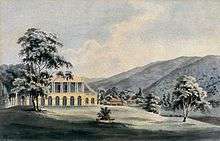
As Light's residence
The original Suffolk House served as Francis Light's residence and has been described as a simple Anglo-Indian Garden House style of timber and attap construction, built within his pepper estate called Suffolk. Light settled in the estate until his death in 1794.
Service to Colonial Britain
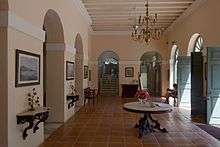
On the purchase of the land from Light's estate in 1805, William Edward Phillips began the works of a Georgian-styled mansion called Suffolk Park. He was not, at the time of the mansion's construction, governor to the island, but became so in later years. It was an ostentatious statement in a settlement with barely 120 European residents, many of whom were trades people and merchants.
The mansion subsequently served as the residence of several more early governors for less than a quarter century, including William Edward Phillips' father-in-law, Governor Bannerman, amongst other Governors of Penang and the Governors of the Straits Settlements. The mansion also served as a venue for social and official functions.
During the 1810s and 1820s, the mansion was a Government House that assumed the role as a meeting place for critical political discussions, including, most notably, discussions with Stamford Raffles regarding the founding of Singapore.
Service to the Methodist Boys' School

The mansion remained in use as a governor's residence until the completion of The Residency in 1890, after which it was relegated to general government functions before being sold to Mr. Lim Cheng Teik. In 1928, Mr Lim sold the building and land to Reverend P.L. Peach of the Methodist Church of Malaya for $40,000 (Straits Settlement dollars) for the purpose of housing the Anglo-Chinese High School, later to become the local Methodist Boys' School. A smaller school building containing 12 classrooms was built near the original North Porch of the mansion in 1955. In 1956, the Methodist Church submitted plans to have Suffolk House demolished and to have new school buildings built over it. The then President of the Municipal Council, Mr. John Sjovald Hoseasom Cunnyngham-Brown, persuaded the school to retain the mansion but build on the rest of the land. The main school building and another wing was completed later in 1956.
The building assumed various roles through its 46 years of ownership by the Methodist Church. In 1931, Standard Six students were transferred into the building, before the entire Primary School (Standards 1-6) eventually moved into it in 1945. World War II saw the building temporarily occupied by the Japanese administration. A dental clinic was later added into the building in 1953, and it also served as the Old Tuckshop (school canteen) until 1975. The building's rapid deterioration was noted since the 1950s, and in 1975, the building was declared unsafe and was vacated. Between then and its restoration in the 2000s, the building's roof and upper floor had collapsed.
Restoration
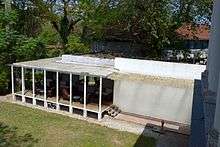
Since 1961, campaigning has existed to restore the mansion. Through the years, various efforts to restore the house were hampered by complications, including problematic land transfers and waning interest. In 1993, the Penang Heritage Trust conducted structural studies and stabilisation works on the buildings with assistance from the SACON Heritage Unit, an organisation based in South Australia (Adelaide, the capital of South Australia, was surveyed and laid out by Francis Light's son, William Light). The Suffolk House Committee was also formed by Penang's state government.
In 2000, the Methodist Boys' School was given a neighbouring plot of land from the state government in exchange for the land on which Suffolk House stood. Restoration work began in November 2000, but funds by the state government were only sufficient to provide stabilisation steel work, repair the central jack roof timbers over the ball room and retile the pitched jack roof. From 2004 onwards, rehabilitation work were aided by further state funding and donations from HSBC (of RM 2.5 million) and various parties. An estimated RM 5 million was needed to restore and refit the mansion.
Reopening to the public
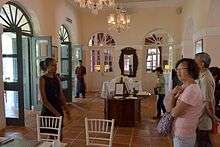
After years of anticipation, Suffolk House finally opened its doors to the public in 2009. The house is being managed by YKH Group of Restaurant under the watchful eyes of Badan Warisan Malaysia, a non-government organisation, which is concerned with the conservation and preservation of Malaysia's built heritage.
The house and garden are open for public walkabout daily from 11am to 6pm (last entry at 5:30 pm). Admission costs RM20 for Adult, but children under six receive free entry. Children on school excursions also enter free. Guided tours are available by appointment for groups of ten or more visitors at a cost of RM15 per person (though discounts can be offered to school groups). Visitors may use the RM20 Admission ticket to redeem food and beverages worth up to RM20 at the restaurant located on the first floor of Suffolk House.
Dispute of construction and ownership
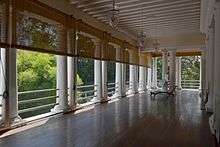
The first owners of the Suffolk House remains disputed by two quarters, which either claimed that the house was constructed in the early 1790s for Light, or constructed in 1809 for the subsequent governor of Penang, William Edward Phillips, about 15 years after Light's death.
Historian F. G. Stevens, one of the main authorities on the early development of Penang, pointed out in a 1929 article "A Contribution to the Early History of Prince of Wales Island" that the road leading to the house from Air Itam Road was only "lined out but not made" in 1807, discounting the possibility that the house could have been built before then.
Meanwhile, Light's will indicates that he bequeathed his common law wife, Martina Rozells, "the pepper gardens with my garden house, plantations and all the land by me cleared in that part of this island called Suffolk...", referring to either the house or estate, indicating that either or both assets already existed when Light died.
Architecture

The original house was simply a humble timber-and-attap garden house, fashioned in a simple Anglo-Indian Garden House style formerly common in British India. The current Suffolk House is a detached double-storey building of Euro-Indian Georgian styling.
References
- "Restoration of Suffolk House". Penang Heritage Trust website. Archived from the original on 18 November 2006. Retrieved 5 April 2007.
- "Penang Talk News Blog: The Restoration Of The First Great House Of Penang, Suffolk House". Penang Talk Malaysia Tourism. Retrieved 5 April 2007.
- "Suffolk House – Captain Francis Light's Residency". Journey Malaysia. Retrieved 5 April 2007.
See also
- The Residency, successor to the Suffolk House.
- Similar British colonial residences in other regions:
- The Istana in Singapore.
- Governor's residence in Malacca.
- Carsoca in Kuala Lumpur.
| Wikimedia Commons has media related to Suffolk House, Penang. |
Coordinates: 5°24′39″N 100°18′19″E / 5.410913°N 100.305347°E